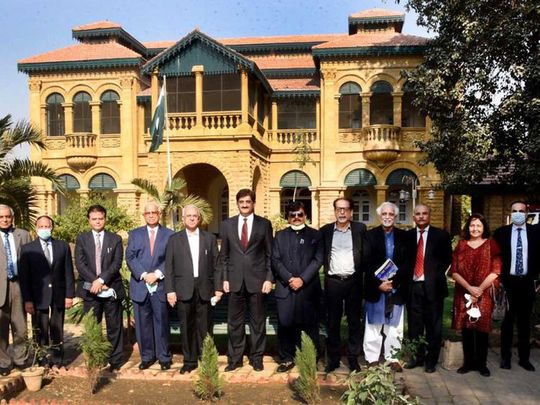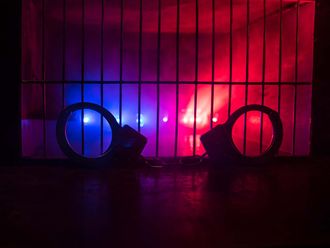
Karachi: Leader of Opposition in Sindh Assembly, Haleem Adil Sheikh, has vowed that he will not allow any commercial activity at the Quaid-e-Azam House Museum (QAHM) that could diminish the heritage status of the historical building that was once the private residence of founder of Pakistan in Karachi before partition of British India.
The Opposition leader visited the QAHM after reports that the Sindh government has allowed unauthorised construction on the protected heritage site in Karachi.
Adil Sheikh said that he got to know that an underground car parking facility and four-storeyed building was being constructed on the premises of QAHM in violation of its protected heritage status.
He said that a soil testing machine had been brought to the site for the purpose while the process had begun to alter the heritage the status of the place by converting its library into an office.
“This building belongs to our national heritage as we have to protect it. No commercial activity could take place here as nobody is more important than Quad-e-Azam,” said the Opposition leader,
He said that any attempt to excavate for any future construction on the premises of QAHM wouldn’t be allowed.
He warned that he would hold a protest at the QAHM and stage a sit-in outside Sindh Chief Minister’s House if any unauthorised construction is taken up at the heritage site.
“We are elected representatives of the people of this country as we are fully answerable to the masses on this issue. No activity will be allowed that could harm the heritage status of this building Adil Sheikh said.
The QAHM (formerly the Flagstaff House), situated on the intersection of two main roads in Karachi’s centre, was constructed in 1868. Pakistan’s founder, Quaid-e-Azam Mohammed Ali Jinnah, purchased the property in 1943. Later, sister of Quaid-e-Azam, Fatima Jinnah, moved to this residence in 1948 and she stayed there for 18 years. Pakistan’s government purchased the property in 1985 and declared it a site of national heritage. The building was declared a museum in 1993.
Later, the Sindh government assumed control of the site after passage of the 18th Constitutional Amendment.








